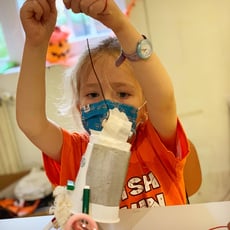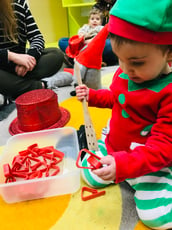Currently less than 30% of women worldwide are researchers, they are less likely to enter and more likely to leave STEM careers (Science, Technology, Engineering and Mathematics), and are extremely underrepresented in fields like engineering and computing. Of course we insist in adding Art to education because we are a STEAM Learning Center, but in this occasion let’s talk about STEM.
During school age, however, girls overall get better grades, including in STEM subjects. There seems to be a disconnect between girls capabilities in STEM subjects, their perceived capabilities, and their willingness to pursue degrees and then careers in these areas.
How do we empower girls to apply their brains and creativity to these fields that will be taking center stage in the future?
"We need all hands on deck, and that mean
clearing the hurdle for women and girls as they
navigate careers in science, technology,
engineering and math", Michelle Obama
While there are many factors that seem to account for the scarcity of women in these fields, I believe that by being aware of our sometimes unconscious bias we can make a big difference in girl’s attitude towards these fields from a very early age. We can have a huge influence not only in their feelings of competence in this area, but in their interest in these fields.
Studies have shown that oftentimes parents will spend more time exploring and explaining scientific concepts to boys than to girls, even when the girl has specifically asked a question, assuming a lesser interest.
The type of activity and play we encourage what and how they play, and therefore the skills and interests they build. This is affected by the toys we buy, the freedom and time we give them to explore. For example, building and playing sports helps develop spatial reasoning, which are considered essential in fields like engineering, but these activities and toys are generally marketed and encouraged more in boys than in girls.
While we have come a long way, still there are toys/games/books that are marketed toward boys or girls, and parents and even children will use these cues in choosing what to play with. For example, generally books for young children about science will be marketed as ‘boy books’ and love stories with princesses will be marketed as ‘girl books’. We all need to reflect and be more thoughtful. Whether as a parents, caregivers, or family friends, we need to be aware of the messages we are sending, and the thoughts and feelings around STEM that we are fostering in young girls with out actions.


